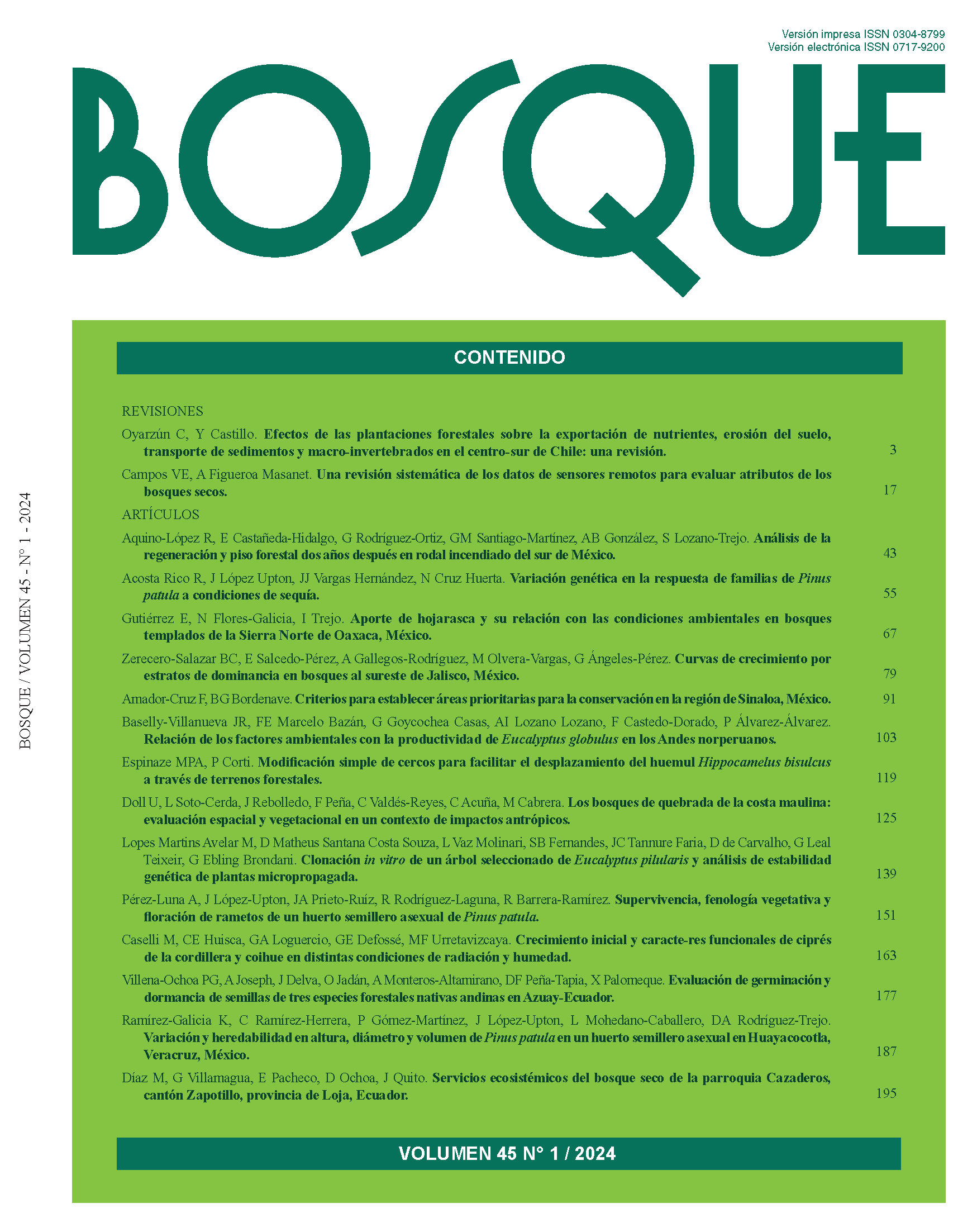Growth curves by dominant strata in forests in southeastern Jalisco, Mexico
Main Article Content
Abstract
One of the most important functions of forests is their capacity to store carbon, which varies according to floristic composition, age, and tree density. To provide information that is useful for the carbon inventories, the construction of growth curves for dominant strata within the study area was set as the objective of this work. With data from the National Forest and Soil Inventory 2005-2009 were calculated the IVI by conglomerate and from a dendrogram performed with cluster analysis, using the Ward´s linkage method, dominant strata were formed. A growth curve per community was constructed based on the maximum yields per hectare recorded in the forestry management plans, the percentage increases were attributed to volume per species at different ages, which was obtained by ICA through trunk analysis. Five dominant strata were formed; Pinus oocarpa (21.08 % to 54.38 %), Pinus douglasiana (41.45 % to 89.83 %), Pinus devoniana (27.53 % to 63.88 %), Pinus leiophylla (27.53 % to 89.03 %) and Quercus spp. (36.05 % to 93.26 %). The maximum yields for the stands within the study area were 329.98 m3 ha-1, 330.71 m3 ha-1, 171.35 m3 ha-1, 185.22 % and 127. 46 m3 ha-1, respectively. The Pinus oocarpa and Pinus douglasiana dominant strata are had the highest percentage increases in the region due to their historical foment.


 https://orcid.org/0000-0002-1785-5721
https://orcid.org/0000-0002-1785-5721